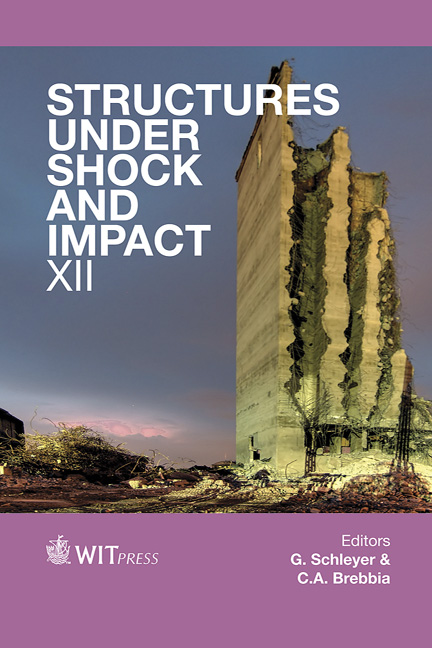Plate-impact Loading Of Cellular Structuresformed By Selective Laser Melting
Price
Free (open access)
Transaction
Volume
126
Pages
12
Page Range
145 - 156
Published
2012
Size
2217 kb
Paper DOI
10.2495/SU120131
Copyright
© 2012 British Crown
Author(s)
R. E. Winter, M. Cotton, E. J. Harris, D. J. Chapman,D. Eakins & G. McShane
Abstract
Studies of the shock loading of porous material have the potential to improve our understanding of factors such as density, crush strength and pore size on energy absorbing capability. Porous components were manufactured using Selective Laser Melting (SLM) in which layers of metal powder are fused together to create a structure specified by an electronic file. Samples have been manufactured in which a lattice is formed by an array of intersecting rods angled at 45 degrees to the surface of a 6 mm thick x ~100 mm diameter disc. The cell size is 1 mm3 and the density is 44.6% of solid. A 100 mm gas gun has been used to impact the porous samples onto solid stainless steel plates. Het-V laser interferometry was used to measure the velocity vs. time profile of the transmitted shock. The experimental results were compared with three dimensional computer predictions. It was found that the simulations reproduced the main features of the experimental record but tended to underestimate the measured velocities, suggesting that the codes were not calculating the energy absorbed by the lattice correctly. Additional calculations were performed with the aim of building a picture of the processes of energy absorption in cellular materials whose structure is varied systematically. These supporting studies suggest a possible explanation for the observed computational/experimental discrepancies. Keywords: cellular structures, truss panels, selective laser melting, additive manufacture, impact, shock.
Keywords
cellular structures, truss panels, selective laser melting, additivemanufacture, impact, shock





